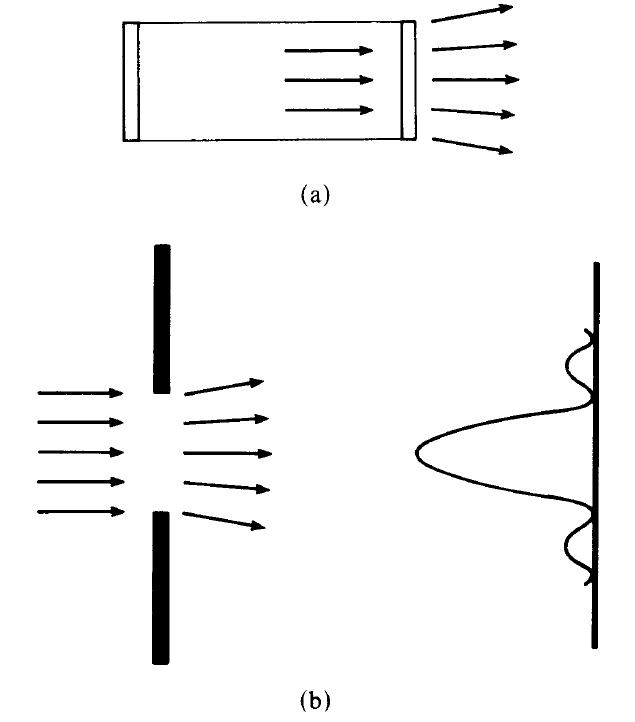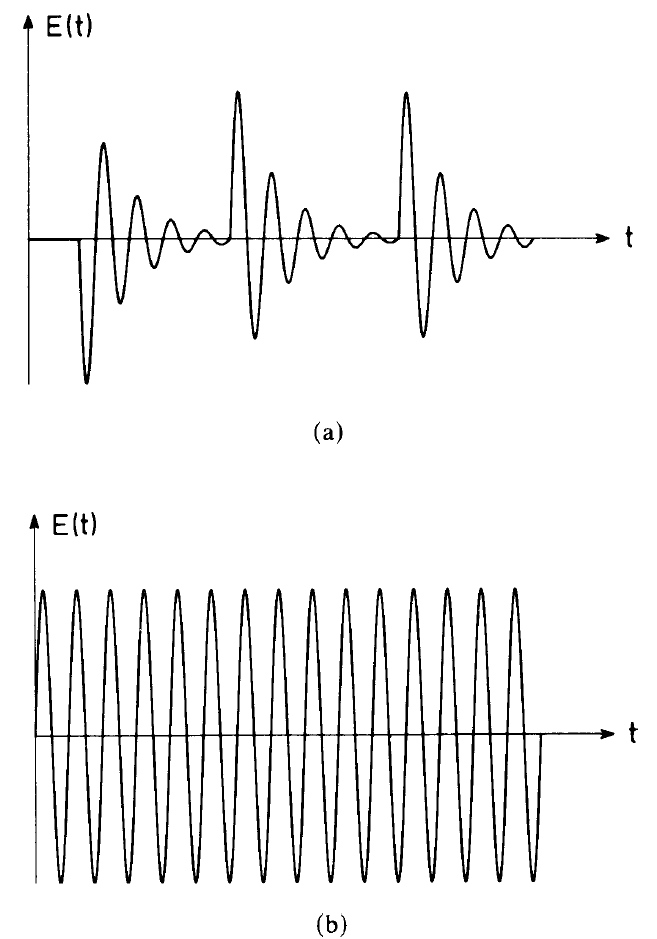
Typical properties of laser light
 المؤلف:
H. HAKEN
المؤلف:
H. HAKEN
 المصدر:
LASER LIGHT DYNAMICS
المصدر:
LASER LIGHT DYNAMICS
 الجزء والصفحة:
vol 2 ، p19
الجزء والصفحة:
vol 2 ، p19
 1-12-2016
1-12-2016
 2048
2048
Typical properties of laser light
The typical properties of laser light make the laser an ideal device for many physical and technical applications. Let us quote some of its most important properties.
(1) Laser light can have high intensities. Within laser light pulses, powers far greater than 100 W can be achieved. In order to visualize this power just think that 108 light bulbs, each with 100 W, are needed to produce the same power. It is more than the power of all American power stations taken together. For applications in laser fusion, lasers with the power of more than 1013 W are built or tested experimentally at present. High cw emission can also be achieved. It reaches an order of magnitude of about l05 W. The achieved top powers are not published (for obvious reasons).
(2) Laser light possesses a high directionality. This stems from the fact that the light within the laser hits the mirrors at its endfaces in form of a plane wave, whereby the mirrors act as a hole giving rise to diffraction (fig. 1.1). In this way the ideal divergence of a plane wave diffracted by a slit is closely approached. A laser with a diameter of a few centimeters can give rise to a laser beam which, when directed to the moon, gives rise to a spot of a few hundred meters in diameter. The strict parallelism of the emerging light results in an excellent focusability which jointly with the high laser light intensity allows a production of very high light intensities in very small volume elements. When one calculates the electric field strength belonging to the corresponding light intensity, field strengths result which are far bigger than 108 V/cm. These are field strengths to which otherwise electrons in atoms are subjected. In this way ionization of atoms by means of laser light becomes possible.

Fig. 1.1. By means of the laser process a plane parallel wave is produced in the laser (a). The divergence of the emitted beam corresponds to that of a plane wave diffracted by a slit (b).
(3) The spectral purity of laser light can be extremely high. The frequency width which is inversely proportional to the emitted power can be δv = 1 HZ for 1 W emitted power in the ideal case. Experimentally δv = 100 Hz has been realized. Taking δv = 1, the relative frequency width for visible light is δv/v = 10-l5 which is of the same order of magnitude as that of the Mossbauer effect. It is important to note that this frequency purity is achieved jointly with a high intensity of the emitted line quite in contrast to spectrographs where high frequency purity is achieved at the expense of intensity. The frequency purity of laser light is closely connected with its coherence.
(4) Coherence. While light of usual lamps consists of individual random wave tracks of a few meters length, laser light wave tracks may have a length of 300,000 km.
(5) Laser light can be produced in form of ultrashort pulses of 10-l2 s duration (picosecond) or still shorter, e.g. 30 femtoseconds (1 femtosecond = l0-15s). Quite evidently the properties of laser light just mentioned make the laser an ideal device for many purposes which we shall explore in the present

Fig. 1.2. (a) The electric field strength E (t) of light of a lamp consists of uncorrelated individual wave tracks. (b) Laser light consists of a single coherent very long wave track.
and the subsequent volume. A most interesting question which we shall study later in great detail consists in the problem how the transition from the emission of a lamp to that of the laser takes place. If we pump the laser only weakly and plot its electric field strength E versus time we obtain the picture shown in fig. 1.2. The light field consists of entirely uncorrelated individual wave tracks. The whole light field looks like spaghetti. When we increase the pump power beyond a certain threshold, an entirely new behavior of laser light emerges. It becomes an extremely long wave track. This sudden transition which transforms light from one quality into that of another quality becomes apparent also when we plot the emitted power (of a single mode) versus pump power (fig. 1.3). While below laser threshold, i.e. in the range of thermal light, the emitted intensity increases only slowly,

Fig. 1.3. The emitted power I versus pump power. Within the region of operation of the laser as a lamp the field consists of noise only and increases only slowly with increasing pump power. Above threshold the emitted intensity increases much more strongly with pump power. The intensity is taken with respect to a specific mode.
above threshold it quickly increases. This is a hint that the internal state of order of the laser changes abruptly at laser threshold. This is a process which is strongly reminiscent of phase transitions of superconductors or ferromagnets. Indeed we shall show in chapter 13 that this analogy is very close. Among the more recently discovered properties of laser light are the following. Under suitable conditions, namely high pumping and bad cavity quality, laser light can exhibit chaotic behavior. Laser light chaos is an entirely new type of light which must not be mixed up with so-called "chaotic light from thermal sources". As we have just seen, light from thermal sources consists of very many individual wave tracks. Chaotic light on the other hand still consists of a giant wave track which, however, may show specific fluctuations which we shall explore later in this book. Indeed the study of chaotic laser light has become a new chapter in laser physics.
 الاكثر قراءة في مواضيع عامة في الليزر
الاكثر قراءة في مواضيع عامة في الليزر
 اخر الاخبار
اخر الاخبار
اخبار العتبة العباسية المقدسة


